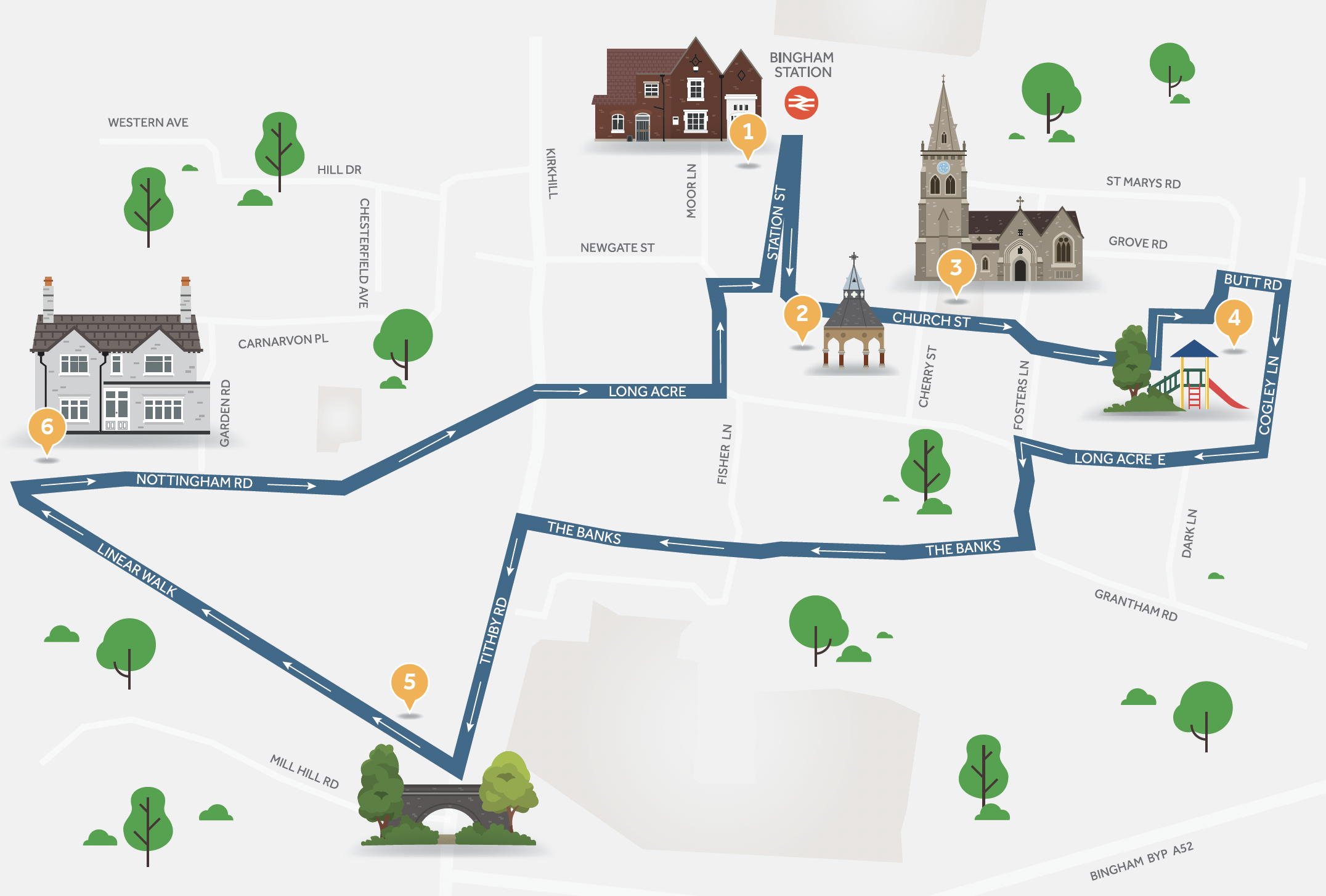(3.62km)
30 mins
Walking
Bingham Station Walk
Bingham
The name Bingham is thought to be Saxon and derived as follows: “the homestead of the family or followers of a man called Binna”, i.e. .Bynna-ing-ham- the place (ham) of the people (ing) of Bynna.
Starting point
Bingham Station, Station Street, Bingham, Nottinghamshire, NG13 8TF
Linked to Public Transport
Points of interest:
The land upon which Bingham originally stood used to be a lake and it is thought that the land on which Bingham currently sits is in a different location to which it was originally built. The location in which Geologists believe Bingham originally occupied was in and around Crow Close. The lost village is said to have two islands one in which Holme Farm sits upon and the other in which Wiverton hall sits. The village is said to have been destroyed by a hurricane, to this day you can still see narrows in the grass depicting the walls and foundations of buildings that once stood.
This site can be found next to Cogley Lane playground in the field and from an aerial view these furrows can be seen easier.

- 1Bingham Station
- Northern Railway in 1857. The buildings were designed by Nottingham architect Thomas Chambers Hine. This was the first of two stations to serve the village of Bingham.
- 2Buttercross
- The Buttercross was erected in 1861 by public subscription in memory of John Hassall, the Earl of Chesterfield’s popular land agent. It was designed by Nottingham architect Thomas Chambers Hine.
- 3St Marys All Saints Church
- St Marys and All Saints Church Much of the current St Mary’s was built between 1220 and 1320, by Bingham’s small community, with support from the lord of the manor Sir Richard de Bingham who came from a family of wealthy Nottingham wool merchants.
- 4Cogley Lane Playground
- This Field is known as Crow Close, it was the first site in England to be described as a deserted medieval village, having been identified as such in 1907. Outlines of boundaries and buildings can be seen from above.
- 5Linear Walk
- The path follows the course of a dismantled railway line built in 1879, one of two lines that passed through Bingham. This line was a branch from Harby and Stathern to form a junction with the Grantham to Nottingham line at Saxondale Junction.
- 6Station House
- The first station master was J. Price, with the house being built in 1879 and subsequently closing to all rail traffic in 1951 to which it became a residential property. Today you can still see the original GNR chimney stacks.
other walks on the Poacher Line
Explore a collection of scenic walks around picturesque market towns and villages, all accessible via the Poacher Line railway.
find out more
Poacher Line Station Walks
Enjoy a collection of walking routes accessible by rail. All along the Poacher Line you can find historic landmarks to visit, scenic walks, visitor attractions and monuments that are accessible up and down the award winning Poacher Line railway.